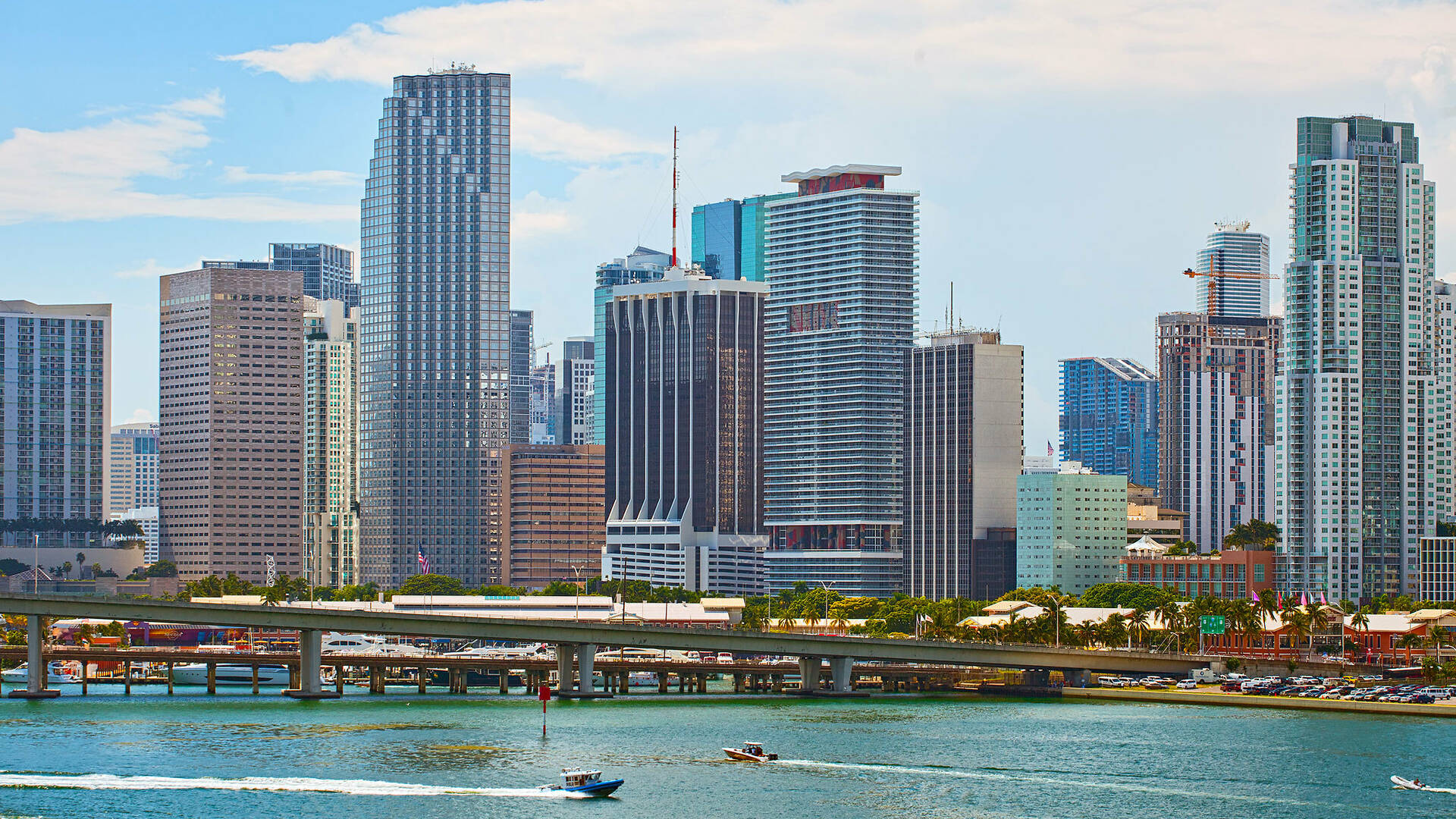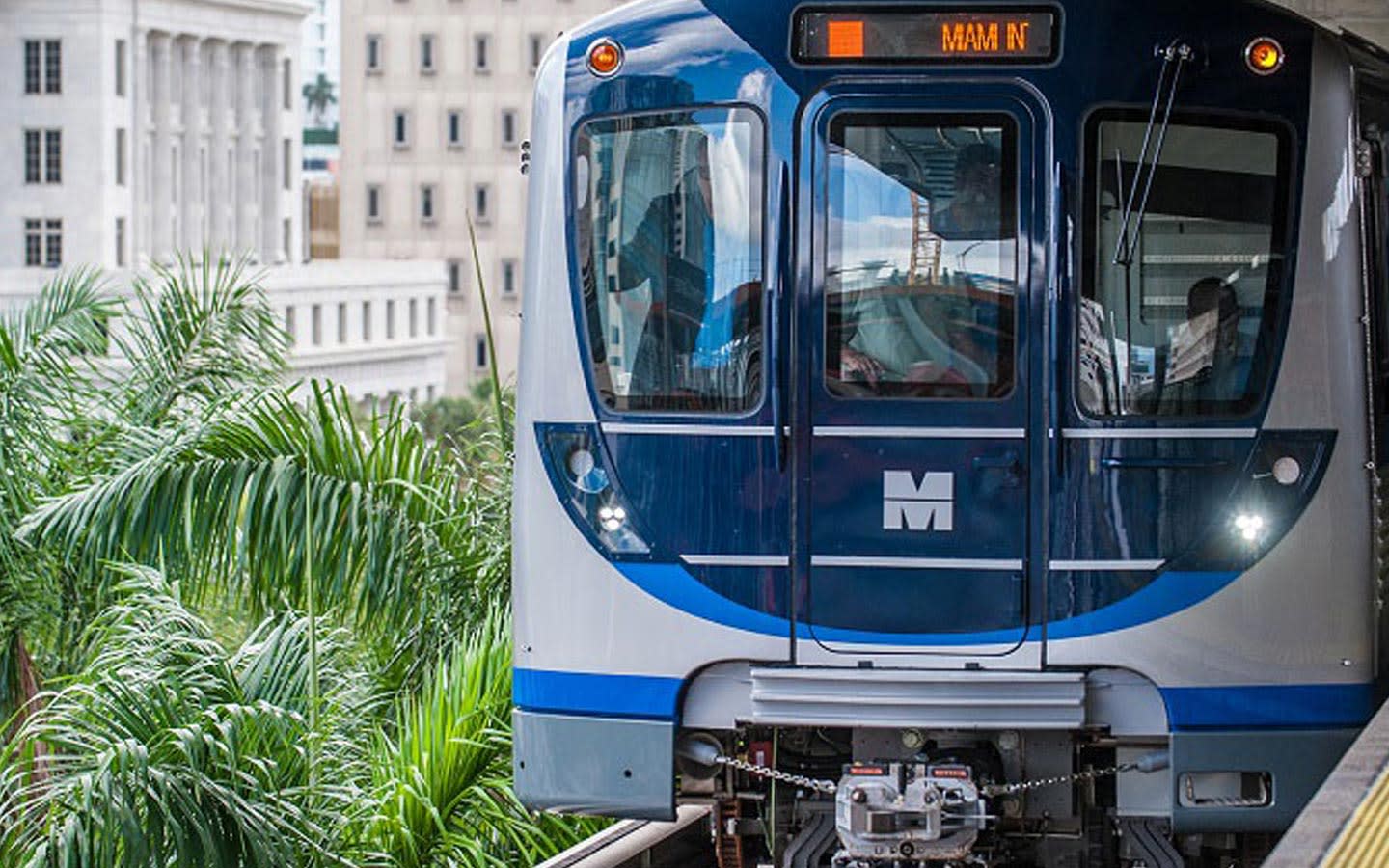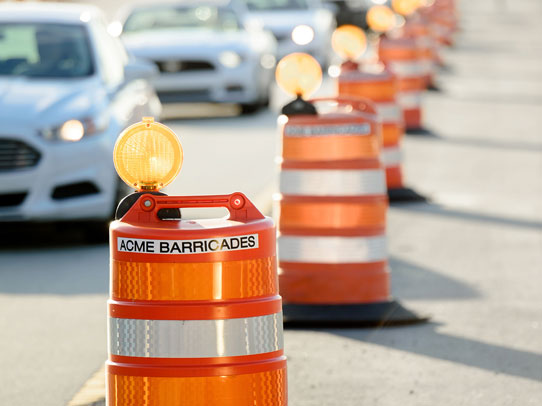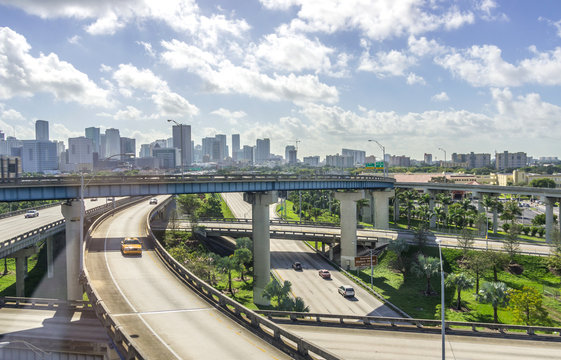Transportation Planning Organization
Documents, Activities & Events
The purpose of this Forum is to facilitate a one full day peer exchange that brings together leaders from both the public and private sectors to exchange ideas and discuss innovative strategies for accelerating project delivery. These exchanges will serve as a platform for sharing best practices, identifying emerging trends, and fostering collaboration between key stakeholders including government agencies, industry experts, and private sector partners. This Forum will initiate vital discussions among partners, TPO Board Members, public officials, organizations, technical staff, and stakeholders on the importance of developing safe, connected, and mobility-focused transportation facilities in Miami-Dade County and the surrounding region.

The US-1 Bicycle and Pedestrian Bridge Feasibility Study explored alternatives to enhance safe mobility for pedestrians and bicyclist across US-1 at the Coconut Grove, Dadeland North, and Dadeland South Metrorail Stations. The proposed improvements included pedestrian-bicycle bridges, upgraded infrastructure, enhanced signalization, and improved crosswalks. The study aimed to (1) prioritize safety, mobility, and accessibility for pedestrians and bicyclists crossing US-1 and (2) promote transit use by offering safer and more accessible connections for pedestrians and bicyclists to the Metrorail system.
SMART STEP Evaluation Report
Miami-Dade TPO’s SMART Street Transportation Enhancement Program (STEP) was launched in 2021 with eleven projects aimed at addressing access and mobility challenges in both the Urban Mobility and Non-Urban Core areas. The program recommends safety improvements at major crosswalks to enhance mobility for the impaired, incorporating features such as high-visibility crosswalks, ADA-compliant pedestrian facilities, and continuous bicycle pathways. This report assesses the progress of the SMART STEP projects and highlights “lessons learned” to improve the efficiency of future initiatives. Of the eleven projects, eight have been completed to date (September 2024), while the remaining are either programmed or under evaluation for further consideration. This document identifies factors that contributed to the success as well as challenges encountered during the project development and implementation phases.
Miami-Dade 2050 Bicycle-Pedestrian Master Plan
The Miami-Dade 2050 Bicycle-Pedestrian Master Plan outlines a long-term vision for improving walking and bicycling in the region, helping to create a safer, and more sustainable environment for Miami-Dade County residents. This Master Plan builds upon the Miami-Dade 2045 Bicycle-Pedestrian Master Plan and provides a blueprint to address current and future needs, focusing primarily on daily commuters and those projects which support safety for the greatest number of people each day. The Master Plan is fully coordinated and integrated with the recommendations made in the 2050 Long Range Transportation Plan (LRTP) regarding non-motorized strategies.
2024 Freight Plan Update
The Miami-Dade TPO updates the Miami-Dade County Freight Plan on a regular basis in alignment with the TPO’s Long-Range Transportation Plan (LRTP) update. In addition to developing a list of projects for funding consideration within the LRTP, this report highlights the importance of freight mobility in Miami-Dade County and documents how the county’s freight industry has evolved over time.
People Mover Technology as an Option to Further Extend the Reach of the SMART Program Study
This study assessed the application of Automated People Mover (APM), or similar technology, to extend and augment the reach of the Strategic Miami Area Rapid Transit (SMART) Program in areas connecting to existing or future SMART Program corridors, and intermodal hubs where feasible. Additionally, it provides the necessary information to evaluate and develop viable concepts consistent with the Miami-Dade TPO’s Long Range Transportation Plan (LRTP). The results of this study define five route alternatives that are intended to complement and build on Miami-Dade County’s transportation network and to ensure greater integration with the SMART Program.
Enhancing SRTS Along the South Dade Trail Feasibility Study
The feasibility study examined the need for improved bicycle and pedestrian access to public schools in South Miami-Dade along the South Dade Trail and assessed the current Safe Routes to School (SRTS) program’s capacity to meet these needs. The SRTS program is a funded program aimed at making walking and biking to and from school safe, practical, and enjoyable. The South Dade Trail, spanning from Dadeland to Florida City, connects numerous municipalities which represent some of the fastest growing communities in Miami-Dade County. The study identified key opportunities for improvement and proposed enhancements along the trail in three phases: Short-Term (3-5 years), Mid-Term (5-7 years), and Long-Term (10+ years).
Gain insights about recent analyses and studies completed by TPO.
 The 2050 LRTP was adopted by the Miami-Dade TPO Governing Board on September 17, 2024. It is a visionary blueprint designed to guide the future of transportation in rapidly evolving Miami-Dade County as the community faces challenges and opportunities that come with growth, technological advancements, and the need for sustainable development. The Plan was built around core principles that highlight Miami-Dade TPO’s commitment to enhancing the quality of life for all residents, ensuring seamless connectivity across Miami-Dade County, and fostering economic vitality through strategic transportation investments. The 2050 LRTP is focused on providing mobility options and is guided by achieving world-class transportation that promotes mobility, safety, innovation, and economic competitiveness for Miami-Dade County’s current and future generations.
The 2050 LRTP was adopted by the Miami-Dade TPO Governing Board on September 17, 2024. It is a visionary blueprint designed to guide the future of transportation in rapidly evolving Miami-Dade County as the community faces challenges and opportunities that come with growth, technological advancements, and the need for sustainable development. The Plan was built around core principles that highlight Miami-Dade TPO’s commitment to enhancing the quality of life for all residents, ensuring seamless connectivity across Miami-Dade County, and fostering economic vitality through strategic transportation investments. The 2050 LRTP is focused on providing mobility options and is guided by achieving world-class transportation that promotes mobility, safety, innovation, and economic competitiveness for Miami-Dade County’s current and future generations.View the 2050 LRTP here
Annual Report
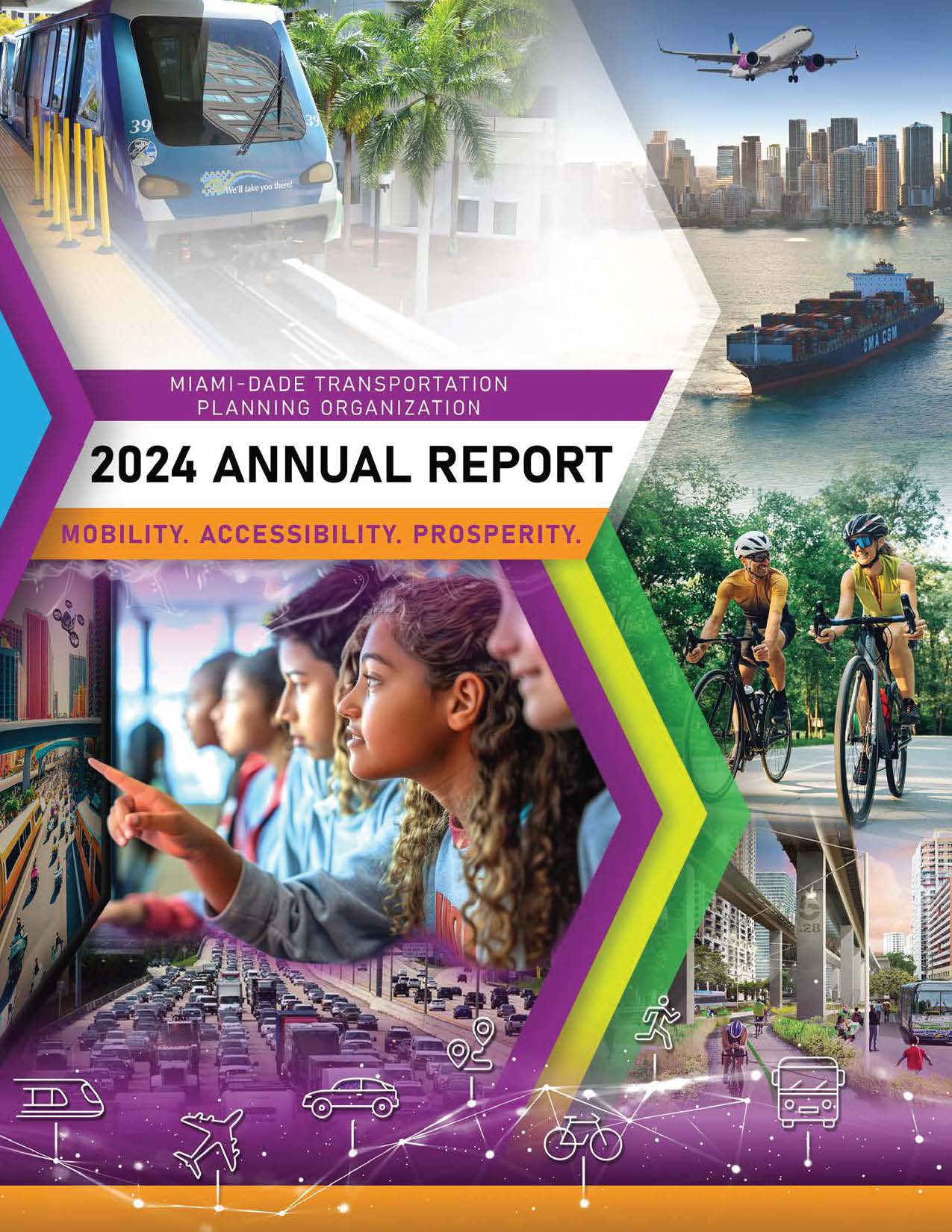
The federally required 2024 Annual Report is now available. This report serves to inform the general public and partner agencies on the federal fund allocations and transportation priority projects advancing in Miami-Dade County.
A historical transportation timeline of progress is also illustrated in this document as well as a break down of TPO Governing Board funding commitments, goals, and objectives.
View the 2024 Annual Report as a Flipbook or download the PDF.
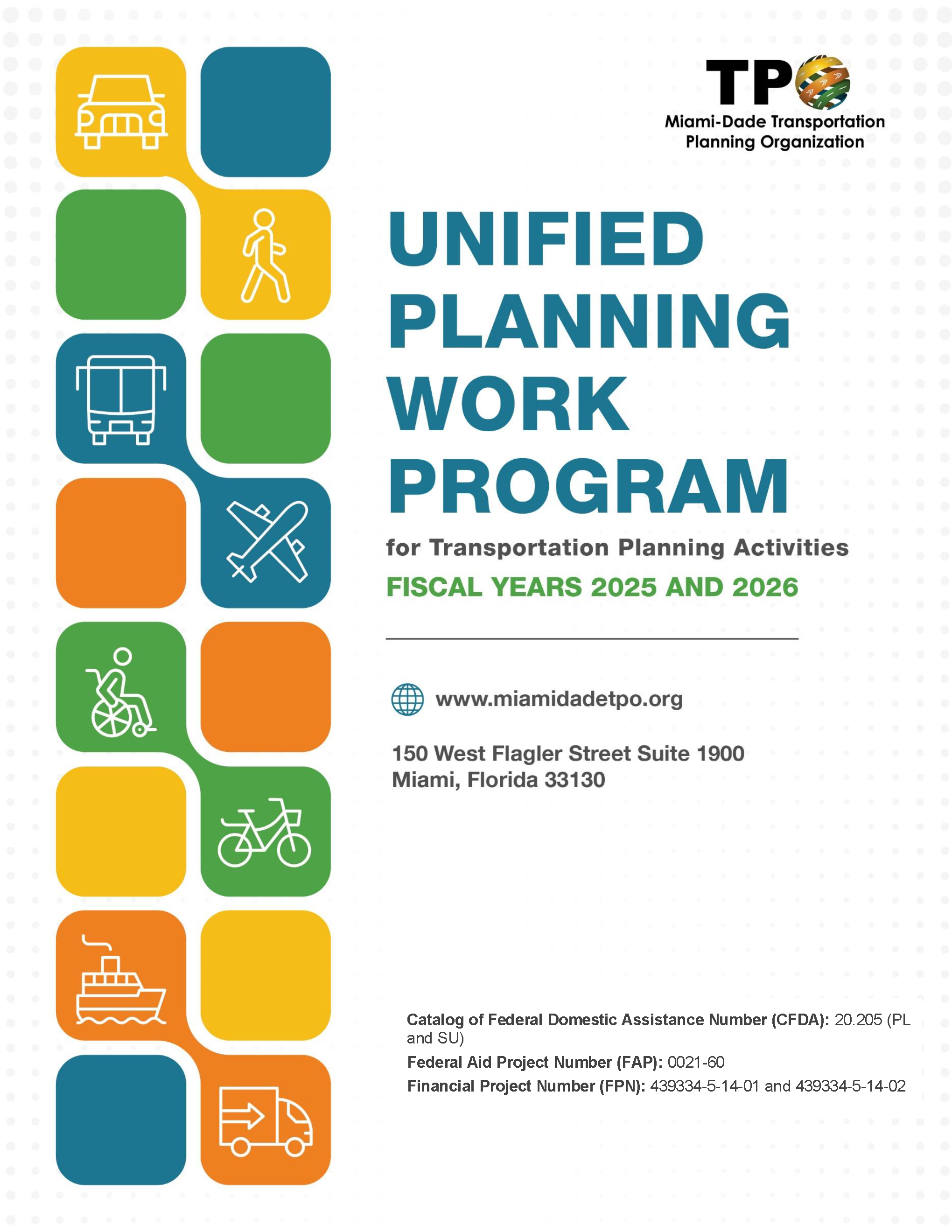 Unified Planning Work Program (UPWP)
Unified Planning Work Program (UPWP)The UPWP describes transportation planning priorities and activities managed by the Miami-Dade TPO. The program includes specific tasks for the TPO and our planning partners that will be performed every two years. Our current UPWP is being carried out from July 1, 2024 through June 30, 2026, and outlines the planning, projects, budget, and activities that support the comprehensive and multimodal transportation improvement program approved for Miami-Dade County.
View the FYs 2025 and 2026 UPWP here
Transportation Improvement Program (TIP)
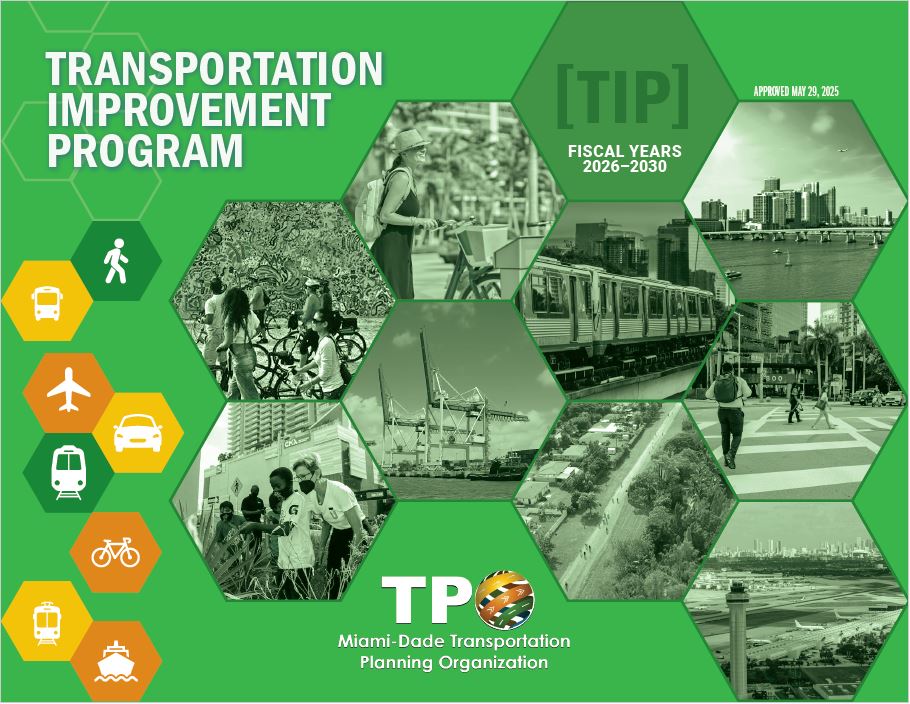 The current FYs 2026-2030 TIP specifies transportation improvements for the next five years, and is updated every year as required by federal government regulations. It is a staged multi-year program that sets the priorities of transportation improvement projects with federal, state, and local funding. It contains various categories of improvements including: Highway, Transit, Aviation, Seaport, Non-Motorized, Freight, Private Sector, and Regionally Significant Transportation Projects. It must also contain all transportation projects that receive federal funds.
The current FYs 2026-2030 TIP specifies transportation improvements for the next five years, and is updated every year as required by federal government regulations. It is a staged multi-year program that sets the priorities of transportation improvement projects with federal, state, and local funding. It contains various categories of improvements including: Highway, Transit, Aviation, Seaport, Non-Motorized, Freight, Private Sector, and Regionally Significant Transportation Projects. It must also contain all transportation projects that receive federal funds.View the FYs 2026-2030 TIP here and Executive Summary - Citizens Version here
 On January 30, 2025, the Miami-Dade TPO Governing Board recognized TPO’s new transportation safety influencer “Mobility Guardian” with its winning design created by students from New World School of the Arts (NWSA) ninth grade Digital Imaging/3D Studies/Entrepreneurial class. This project was unanimously approved by the TPO Governing Board to promote educational opportunities and exchanges with Miami-Dade County Public School Board.
On January 30, 2025, the Miami-Dade TPO Governing Board recognized TPO’s new transportation safety influencer “Mobility Guardian” with its winning design created by students from New World School of the Arts (NWSA) ninth grade Digital Imaging/3D Studies/Entrepreneurial class. This project was unanimously approved by the TPO Governing Board to promote educational opportunities and exchanges with Miami-Dade County Public School Board.
This collaboration was led by TPO Executive Director, Aileen Bouclé, AICP, and management team including TPO Deputy Director-Administration, Zainab Salim, MPA, alongside NWSA Principal, Dr. Contessa Bryant, and NWSA teacher, Mr. Ray Parris.
Along with Mobility Guardian, Mobility Maven and Mobility Maverick were chosen as Mobility Guardian’s friends as the “Transportation Safety Influencers.”
Congratulations to all students who particpated!

